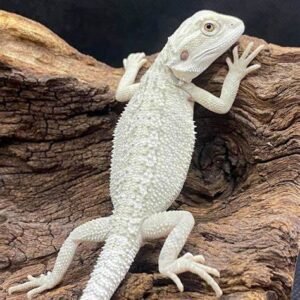bearded dragon sexes
Identifying Male and Female Bearded Dragons
bearded dragon sexes ,Understanding the differences between male and female bearded dragons is essential for effective care and breeding practices. Firstly, size is often a notable distinction; male bearded dragons typically grow larger than their female counterparts. Adult males can reach lengths of 18 to 24 inches, while females usually range from 16 to 22 inches. However, one should not solely rely on size, as individual growth rates may vary.
Coloration also plays a role in identifying the sexes. Male bearded dragons often exhibit more vibrant colors and patterns, especially during mating season when they might display brighter hues to attract females. Females can display subdued colors and perhaps have a less intricate pattern, primarily serving as camouflage to protect them and their eggs from predators.
A crucial anatomical feature to observe is the hemipenes, which are the reproductive organs exclusive to males. These organs are not visibly protruding at all times; however, during breeding season or under stimulation, they can be observed by gently applying pressure at the base of the tail. In contrast, female bearded dragons possess a cloaca that is more elongated and slightly more pronounced, which serves as the opening for waste excretion and egg-laying.
Behavioral differences also provide valuable insights into sex identification. Males may exhibit more aggressive behaviors, such as head bobbing and arm waving, which are part of their mating rituals. Females, on the other hand, might show more nesting behaviors, especially if they are gravid. Observing these behavioral traits can aid owners in determining the sex of both juvenile and adult bearded dragons.
Ultimately, combining observations of physical characteristics and behaviors will enhance your ability to accurately identify the sex of your bearded dragons, ensuring they receive the appropriate care and environment needed for their well-being.
Implications of Sexing Bearded Dragons
Accurately determining the sex of bearded dragons is essential for responsible ownership and effective care. The sex of these reptiles significantly influences various aspects of their management, including housing decisions, breeding practices, and social dynamics among individuals housed together. Understanding the implications of sexing bearded dragons can help prevent conflicts and improve their overall well-being.
When it comes to housing arrangements, the sex of a bearded dragon plays a critical role. Males and females have different social behaviors and territorial needs, which can lead to aggression if mismatched pairs are cohabited. Bearded dragons are known for their distinct social interactions, with males often displaying more dominant behaviors. As such, it is essential to consider sex when selecting tank mates to avoid potential stress or injury that may arise from inappropriate housing scenarios.
Furthermore, for those interested in breeding bearded dragons, accurate sexing is indispensable. Breeding males and females can lead to successful offspring, but misidentification can result in unexpected pregnancies or hindered breeding efforts. Understanding the biological differences also helps owners provide specialized care for females, especially considering the energy demands associated with egg production.
Health issues often stem from improper housing arrangements based on the sex of the dragons. For example, males may exhibit increased aggression when competing for resources, leading to stress and adverse health outcomes. Additionally, females that are forced to cohabitate with males may become overwhelmed, leading to complications such as egg binding. Therefore, knowing the gender of the bearded dragon prior to acquisition is crucial for the animal’s health and owner satisfaction.
When selecting a bearded dragon from a pet store or breeder, potential owners should prioritize knowing the sex. This understanding aids in making informed decisions regarding care, management, and socialization of the animal. Overall, comprehending the implications of sexing bearded dragons is vital for fostering healthy, harmonious environments. Ensuring proper care based on accurate sex identification can prevent many issues related to aggression, health, and social stress in these beloved reptiles.
Showing the single result
-
Bearded Dragons for Sale
eastern bearded dragon
Original price was: $269.00.$239.00Current price is: $239.00. Add to basket

